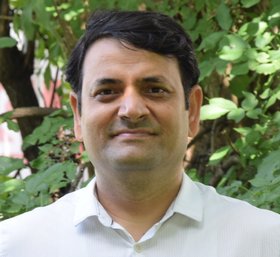Fast computers consuming little energy
Sohan Lal is a new professor at the TU Hamburg
02.02.2022

“I want to help decisively reduce our carbon footprint,” says Sohan Lal. The result of his work is not as obvious as research on e-cars or solar cells. “I'm developing techniques to improve the performance and energy efficiency of multi- and many-core processors such as graphics processors. In other words: I'm excited when we can do more work with less energy using these devices,” says Professor Lal. Meanwhile, such “massively parallel systems” are everywhere - in smartphones, cars and supercomputers – helping people do many things that would have been impossible some time ago.
“We use technology in every moment of our lives, so we are constantly surrounded by computers in one form or another. Each computer has a central processing unit to process data. I'm interested in the architecture of these processing units, which often contain multiple cores to get the job done faster,” says the TU scientist, explaining what he does. For example, the recent stupendous success of machine learning is mainly due to the exponential increase in computing power. Machine learning methods have been around since the 1950s. Sohan Lal points out: “If these massively parallel processors are not used properly, they are very expensive in terms of power and energy consumption. My goal is to design processors so that they are more powerful and energy efficient, as well as easier to program.” For example, if the energy efficiency of discrete graphics processors was increased by just five percent, 4.5 million kilowatt hours of energy could be saved. Putting into a different perspective , that amount would be enough to power 11.3 million households in Germany for one hour!
“Yes” to research
Before joining TU Hamburg, Sohan Lal worked at the Technische Universität Berlin. Before that, he studied computer science and engineering at Indian Institute of Technology Delhi (IIT Delhi) and Jammu, northern India. Sohan Lal can pinpoint the reason for choosing an academic career in academia: “I grew up in an extended family where several members were involved in academia, but it wasn't clear that I would follow that path as well,” Lal says. “The real turning point was a brief teaching stint as a university lecturer in India, which motivated me to pursue a doctorate and go into research”. The TU professor is looking forward to working with his new colleagues and living with his wife and two children in Hamburg. And, in addition to cycling and reading, to a hobby that is easy to pursue in windy Hamburg: Kite flying.
TUHH - Public Relations Office







